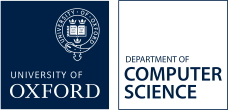The Structure of Quantum Information and its Ramifications for IT
1st July 2006 to 30th June 2011
In the not to distant future information technology will have to cope with devices and components which do not obey the usual
laws of classical physics but those of quantum physics. This passage is unavoidable due to the decrease of scale required
for the increase of computational power and for the miniaturization of devices. But this passage also comes with fascinating
new opportunities, for example the quantum algorithms which endanger the current widely used (classical) cryptographic encoding
schemes (e.g. bank transactions and e-commerce), and at the same time quantum information and computation (QIC) also provides
the corresponding remedy in terms of secure quantum cryptographic and communication schemes. Without any doubt `quantum information
technology' is here to stay and promises to become one of the most intriguing endeavors of this new century. But while quantum
information and computation is the fruit of a major paradigmatic change which consisted of conceiving the `weird' laws of
quantum physics not as a bug but as a feature, the methods haven't changed since the early days of quantum theory, and one
can compare the `manipulations of strings of complex numbers and corresponding matrices' with the `acrobatics with 0's and
1's in the early days of computer programming'. At the same time many important questions related to the limits of QIC and
a general model for QIC remain unanswered and it is unlikely that the current low-level methods of QIC will provide the necessary
capabilities to do so. Here we see a great opportunity for `British-style Computer Science semantics and logic' which we intend
to exploit. The high-level mathematical models (e.g. categorical) and corresponding logics developed to cope with distributed,
hybrid and in particular resource sensitive computational settings seem to be perfectly tailored for capturing the quantum
mechanical realm. Indeed, the starting point for `upgrading QIC' needs to be the quantum mechanical formalism itself, due
to von Neumann, but which was also renounced by von Neumann only 3 years after its creation. A breakthrough results in this
direction was recently obtained by Abramsky and myself were we stripped down the quantum formalisms to its bare `category-theoretic
bones', and within this skeleton we still seemed to be able to do full-blown QIC, but then in a far more conceptual, systematic
and straightforward manner. But the greatest merit of this high-level abstraction is that we were also able to show that the
formal calculations are equivalent to extremely intuitive manipulations within a very simple graphical calculus, which has
the potential to release QIC research from its banner of being hard and completely inaccessible for the non-initiated ones.
We intend to turn QIC research into a systematic discipline based on a small set of well-understood primitive concepts, and
subject to automated design and development tools, involving the appropriate analogues to the currently available high-level
methods from Computer Science such as types, well-behaving calculi, program logics etc. To this means, we intend to further
unveil `the structure of quantum information' (both its qualitative and quantitative content), and of its flow, of its interaction
with classical information-flow, spatio-temporal causal structure, agents, knowledge & belief and their updates. As some
concrete applications of this endeavor we mention an integrated high-level approach to information security, which also in
the classical domain is a very delicate matter, impossible to tackle without the appropriate high-level tools. We also intend
to develop a general model for the vastly in popularity gaining measurement based quantum computing, hence contributing to
the understanding of what is a practicable model of general QIC, and what are its limits.
